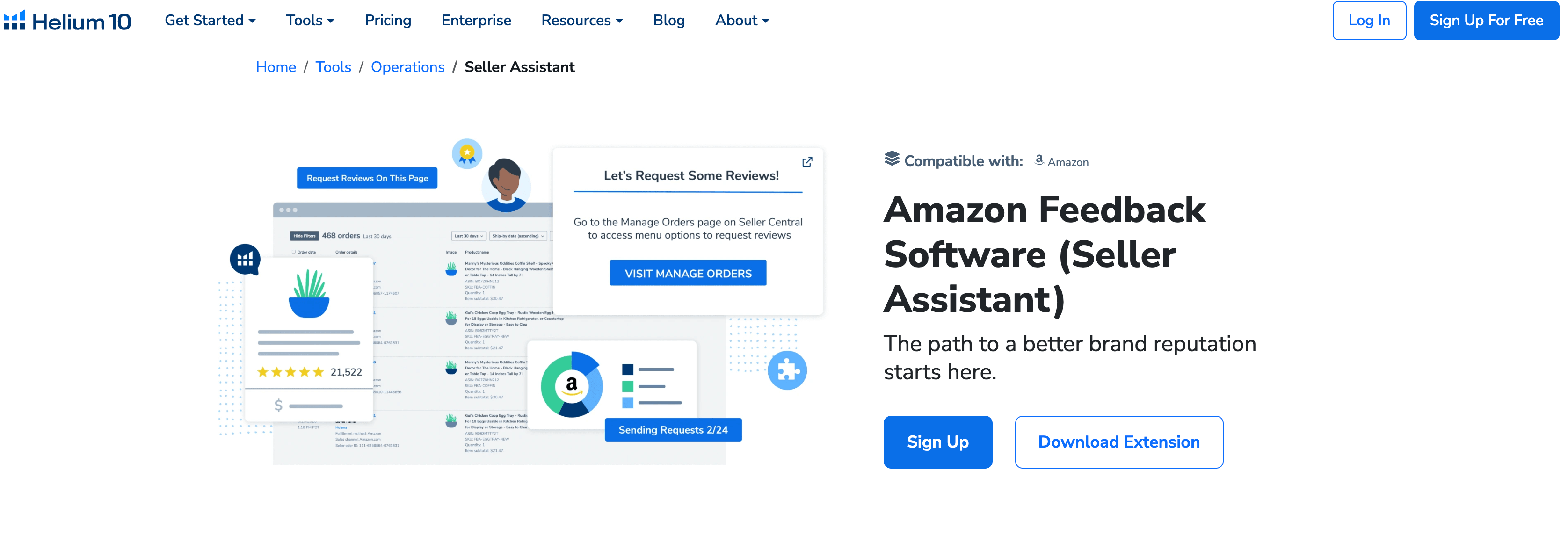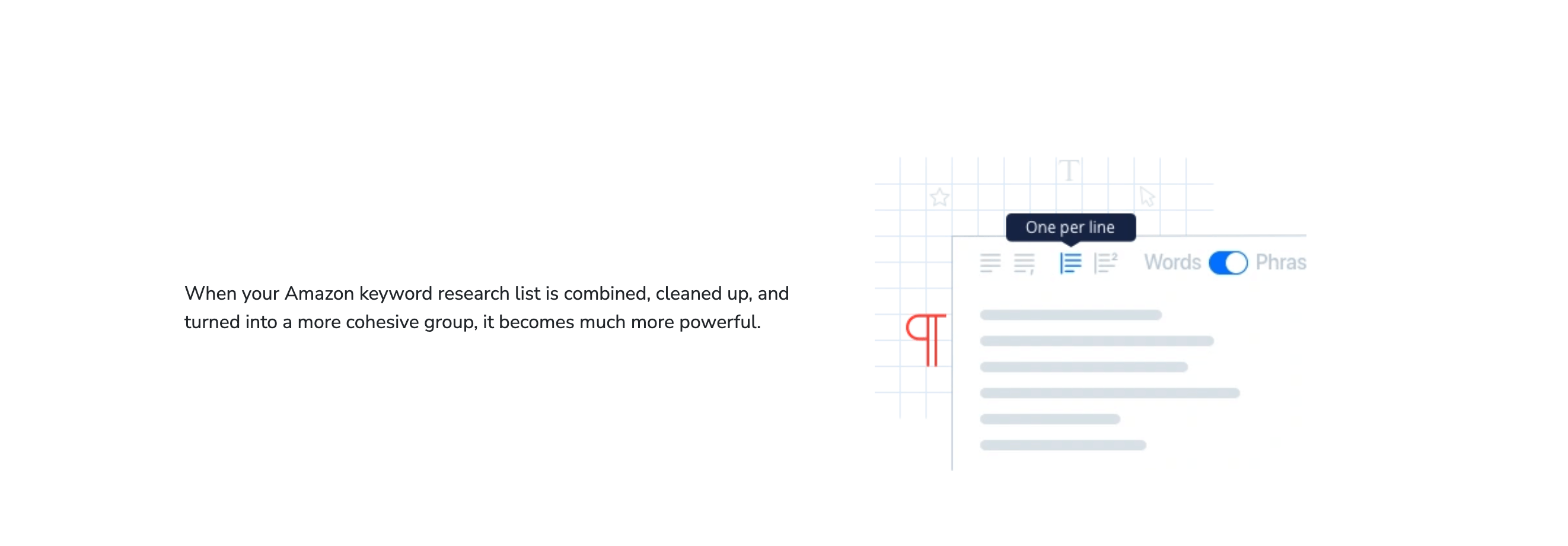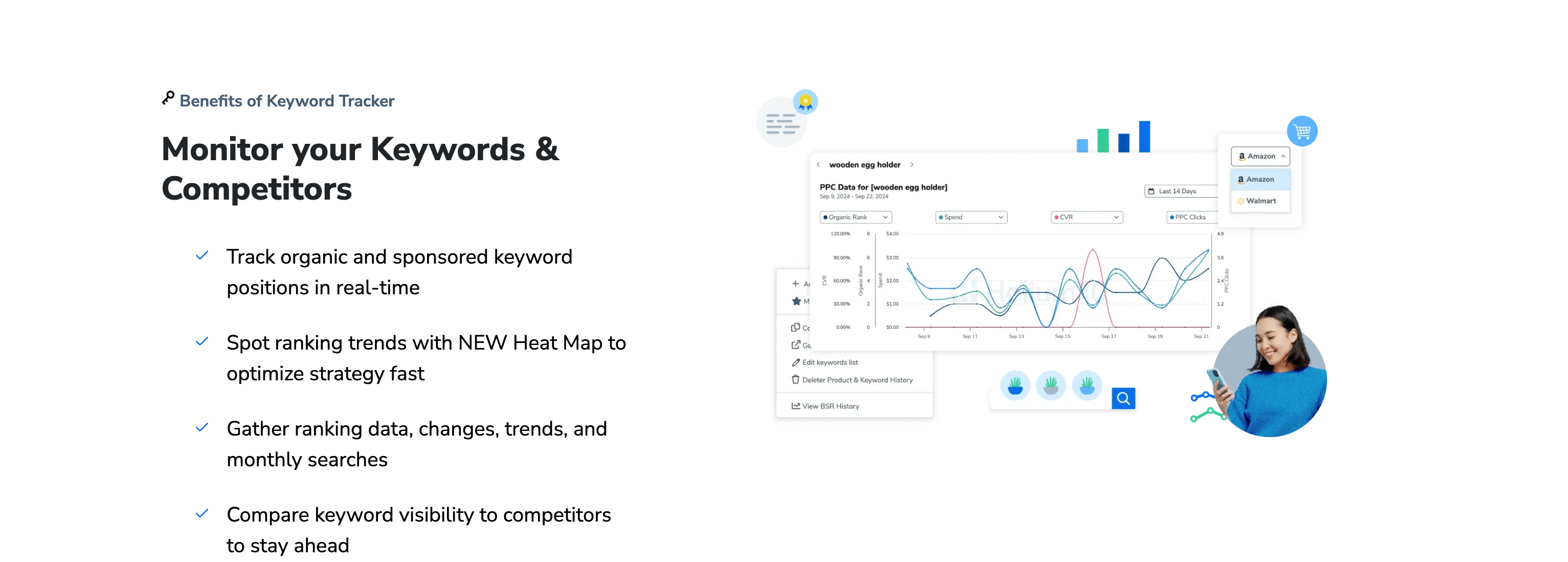Top Mistakes to Avoid When Using Helium 10 Cerebro for Keywords
In the world of Amazon selling, Helium 10’s Cerebro is a game-changing tool for keyword research. 🚀 It helps sellers uncover high-performing keywords, analyze competitor strategies, and optimize their listings for better visibility. However, like any powerful tool, Cerebro requires a strategic approach to maximize its potential. Many sellers, especially beginners, make common mistakes that can lead to wasted time, missed opportunities, and even financial losses. 💸 In this comprehensive guide, we’ll explore the top mistakes to avoid when using Helium 10 Cerebro for keyword research. By understanding these pitfalls and learning how to navigate them, you can unlock the full potential of Cerebro and take your Amazon business to new heights. 🌟
1. Ignoring Search Volume and Competition Balance
One of the most common mistakes sellers make when using Cerebro is focusing solely on either search volume or competition without considering the balance between the two. 🔍 High search volume keywords may seem attractive, but they often come with intense competition, making it difficult for new sellers to rank. On the other hand, low-competition keywords may be easier to rank for, but if they have minimal search volume, they won’t drive significant traffic to your listings. 🛑 Striking the right balance is crucial for long-term success.
1.1 Understanding Search Volume
Search volume refers to the number of times a keyword is searched for on Amazon within a specific period. 📊 High search volume indicates strong customer demand, but it’s essential to validate this data using other tools like Magnet to ensure accuracy.
1.2 Analyzing Competition Level
Competition level measures how many sellers are targeting a specific keyword. 🥊 Low competition keywords are easier to rank for, but they should still have sufficient search volume to justify the effort.
1.3 Finding the Sweet Spot
The ideal keyword has a moderate to high search volume and low to medium competition. ⚖️ Use Cerebro’s filters to identify these opportunities and prioritize them in your strategy.
1.4 Avoiding Overly Broad Keywords
Broad keywords like “shoes” may have high search volume but are too competitive for most sellers. Instead, focus on long-tail keywords like “running shoes for women size 7.” 🏃♀️
1.5 Validating with Other Tools
Always cross-check your findings with other Helium 10 tools like Magnet and Trend to ensure the keyword’s potential. 🔍

2. Overlooking Keyword Relevance
Another critical mistake is targeting keywords that aren’t relevant to your product. 🛒 Irrelevant keywords may drive traffic to your listing, but they won’t convert into sales, leading to wasted ad spend and poor performance. Ensuring keyword relevance is essential for maximizing ROI. 💰
2.1 Defining Relevance
A relevant keyword accurately describes your product and aligns with customer intent. 🎯 For example, if you’re selling a portable blender, “travel blender” is relevant, while “kitchen blender” may not be.
2.2 Analyzing Search Intent
Understand the intent behind a keyword. Are customers searching for information, reviews, or products to buy? 🧐 Focus on keywords with commercial intent.
2.3 Avoiding Misleading Keywords
Misleading keywords can lead to negative reviews and returns. 🚫 For example, don’t target “wireless headphones” if your product is wired.
2.4 Using Negative Keywords
Add negative keywords to exclude irrelevant terms. For example, if you’re selling new products, exclude keywords like “used” or “refurbished.” 🛠️
2.5 Testing with PPC
Use PPC campaigns to test the relevance of your keywords. Monitor conversion rates and adjust your strategy accordingly. 🎯

3. Relying Solely on Cerebro for Keyword Research
While Cerebro is a powerful tool, relying solely on it for keyword research can limit your insights. 🌐 Combining Cerebro with other Helium 10 tools like Magnet, Product Research, and Trend provides a more comprehensive understanding of keyword performance. 🔍
3.1 Using Magnet for Keyword Discovery
Magnet helps you discover related keywords and assess their potential. 🌐 It’s particularly useful for identifying long-tail keywords.
3.2 Analyzing Competitor Listings
Use Product Research to analyze top-performing listings for your target keywords. Look for gaps in the market that you can fill. 🥇
3.3 Monitoring Keyword Trends
The Trend feature helps you identify growing or declining keywords. Avoid targeting keywords with declining trends. 📈
3.4 Validating with Profitability Calculator
Use the Profitability Calculator to estimate the profitability of targeting a keyword. Consider factors like PPC costs and conversion rates. 💰
3.5 Building a Comprehensive Strategy
Combine insights from all tools to build a robust keyword strategy that maximizes your chances of success. 🏆

4. Neglecting Competitor Analysis
Failing to analyze competitor strategies is a missed opportunity. 🥊 Cerebro’s Reverse ASIN Lookup feature allows you to uncover the keywords your competitors are ranking for, providing valuable insights into their strategy. 🔍
4.1 Identifying Competitor Keywords
Enter a competitor’s ASIN into Cerebro to see the keywords they’re ranking for. 🛠️ Look for high-performing keywords that you’re not targeting.
4.2 Analyzing Competitor Listings
Study competitor listings to understand how they’re optimizing for specific keywords. Look for gaps in their strategy that you can exploit. 🧐
4.3 Monitoring Competitor Trends
Use Trend to monitor how competitor keywords are performing over time. Identify emerging trends and capitalize on them. 📊
4.4 Benchmarking Your Performance
Compare your keyword performance with competitors to identify areas for improvement. 🎯
4.5 Staying Ahead of the Competition
Regularly update your keyword strategy based on competitor insights to maintain a competitive edge. 🏆

5. Skipping Profitability Analysis
Targeting keywords without considering profitability can lead to financial losses. 💸 Use Helium 10’s Profitability Calculator to estimate the ROI of your keyword strategy. 💰
5.1 Understanding Profitability Metrics
Consider factors like product cost, PPC spend, and conversion rates when calculating profitability. 📊
5.2 Estimating PPC Costs
Use Cerebro to estimate the cost of targeting a keyword through PPC campaigns. 🛠️
5.3 Calculating Conversion Rates
Analyze historical data to estimate the conversion rate for your target keywords. 🎯
5.4 Setting Realistic Goals
Set realistic profitability goals based on your analysis. Avoid targeting keywords with low ROI. 🚫
5.5 Optimizing Your Strategy
Regularly review and optimize your keyword strategy to maximize profitability. 🏆

6. Failing to Update Keyword Research Regularly
Keyword trends change over time, and failing to update your research can lead to missed opportunities. ⏳ Regularly revisit your keyword strategy to stay ahead of the competition. 🌟
6.1 Monitoring Keyword Trends
Use Trend to monitor how your target keywords are performing over time. 📈
6.2 Identifying Emerging Keywords
Look for new keywords that are gaining popularity in your niche. 🚀
6.3 Adjusting Your Strategy
Update your listings and PPC campaigns based on the latest keyword insights. 🛠️
6.4 Staying Ahead of Competitors
Regularly analyze competitor strategies to identify emerging trends. 🥇
6.5 Automating Updates
Use Helium 10’s automation features to streamline your keyword research process. 🤖

7. Overloading Listings with Keywords
While keywords are essential, overloading your listings with them can harm readability and SEO. 🛑 Focus on natural integration and prioritize high-performing keywords. 🎯
7.1 Understanding Keyword Density
Keyword density refers to the frequency of a keyword in your listing. Aim for a natural balance to avoid penalties. ⚖️
7.2 Prioritizing High-Performing Keywords
Focus on integrating high-performing keywords into your title, bullet points, and description. 🏆
7.3 Avoiding Keyword Stuffing
Keyword stuffing can lead to poor readability and penalties from Amazon. 🚫
7.4 Testing with PPC
Use PPC campaigns to test the effectiveness of your keyword integration. 🎯
7.5 Optimizing for Readability
Ensure your listings are easy to read and provide value to customers. 🌟

8. Conclusion: Mastering Cerebro for Keyword Success
By avoiding these common mistakes, you can unlock the full potential of Helium 10’s Cerebro and take your Amazon business to new heights. 🚀 Remember to balance search volume and competition, prioritize relevance, and regularly update your research. With the right approach, Cerebro can be your secret weapon for keyword success. 🌟
Table: Example Keyword Analysis with Cerebro
| Keyword | Search Volume | Competition | Keyword Position | Relevance |
|---|---|---|---|---|
| Portable Blender | 5,000 | Low | 3 | High |
| Blender for Smoothies | 3,000 | Medium | 5 | High |
| Mini Travel Blender | 2,000 | Low | 8 | High |
| Personal Smoothie Blender | 1,500 | Low | 10 | High |
| Compact Blender for Kitchen | 1,000 | Low | 12 | High |
By following this guide and leveraging the power of Helium 10’s Cerebro, you’ll be well on your way to finding easy-to-rank keywords and achieving Amazon success. Happy selling! 🎉🛍️


Comments